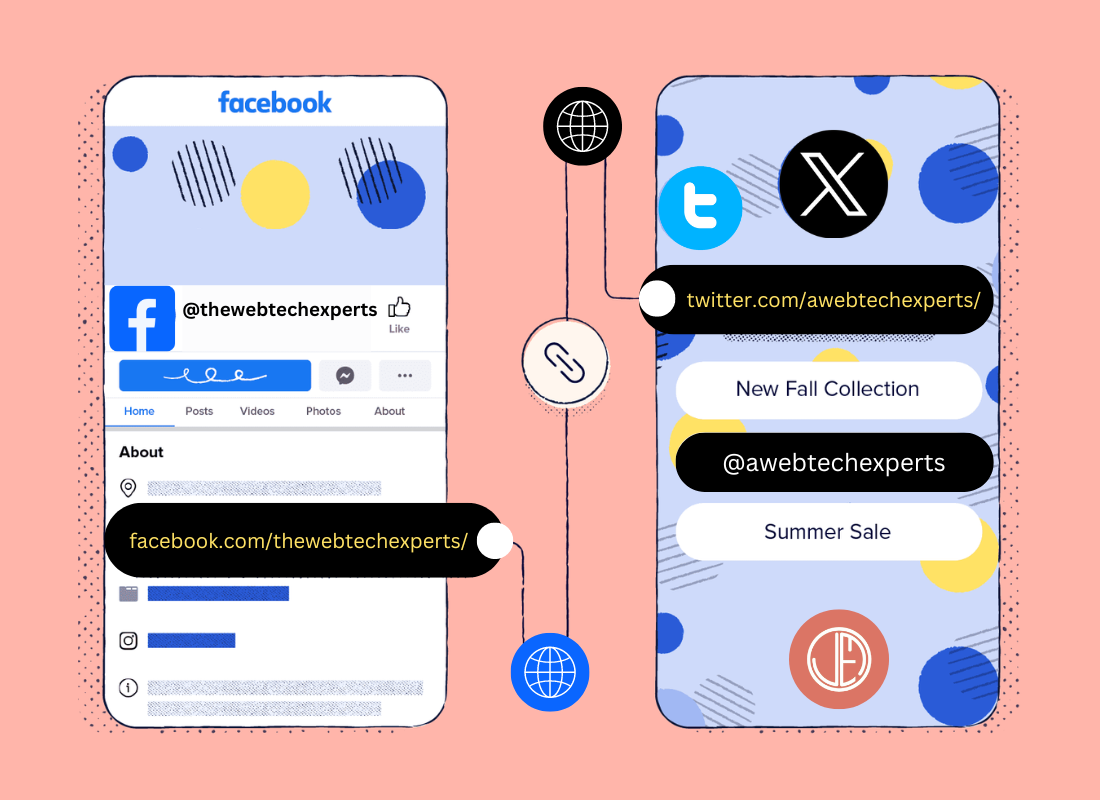In the dynamic world of digital assets, Non-Fungible Tokens (NFTs) have emerged as a groundbreaking force, reshaping the concept of digital ownership and value. This article delves into the exploration of the World of Non-Fungible Tokens (NFTs) while analyzing their impact on the digital landscape.
Non-Fungible Tokens, or NFTs, are a type of digital asset created using blockchain technology. What sets NFTs apart from cryptocurrencies like Bitcoin or Ethereum is their uniqueness. Each NFT has a digital signature that distinguishes it from other tokens, making it impossible to exchange on a like-for-like basis, hence the term ‘non-fungible’.
NFTs have gained significant popularity in the crypto space due to their potential to tokenize virtually anything digital. They can represent ownership or proof of authenticity of a wide range of items, from digital art and music to virtual real estate in digital worlds.
The Emergence Of Non-Fungible Tokens (NFTs)
Non-Fungible Tokens, commonly known as NFTs, have emerged as a groundbreaking innovation in the digital asset landscape. They represent a new class of digital assets that have garnered significant attention in the cryptocurrency space. Unlike cryptocurrencies such as Bitcoin or Ethereum, which are fungible and can be exchanged on a like-for-like basis, NFTs are unique digital assets.
The term “fungible” refers to items that are identical to each other and can be interchanged, like traditional currencies. For instance, one Bitcoin is equivalent to another Bitcoin, and they can be exchanged on a one-for-one basis. This fungibility is a key characteristic of many cryptocurrencies.
On the other hand, NFTs are non-fungible, meaning each token is unique and cannot be replaced with another. This uniqueness is what sets NFTs apart from other digital assets. Each NFT has distinct information or attributes that differentiate it from other tokens. This could be metadata about the asset’s origin, ownership history, or any other characteristic that contributes to its uniqueness.
The Prospects Of Non-Fungible Tokens (NFTs)
This unique attribute of NFTs has opened up new possibilities in the digital world. For instance, they can be used to represent ownership of unique items or assets in the digital realm. This could range from digital art and music to virtual real estate and virtual goods in video games.
One of the most notable applications of NFTs has been in the realm of digital art. Artists can tokenize their artworks into NFTs, providing proof of ownership and authenticity to their digital creations. This has opened up new possibilities for artists to monetize their work and for collectors to invest in digital art.
However, it’s important to note that while NFTs have opened up new avenues for digital ownership and investment, they also come with their own set of challenges and risks. The value of an NFT is largely subjective and can fluctuate greatly depending on various factors such as the popularity of the artist or the rarity of the asset. Therefore, potential investors should do thorough research and consider their risk tolerance before diving into the NFT market.
Understanding The Technology Behind Non-Fungible Tokens
Non-Fungible Tokens (NFTs) operate on blockchain technology, similar to cryptocurrencies. However, while cryptocurrencies use the blockchain to track the ownership of identical tokens, NFTs use this technology to create verifiable digital scarcity. This is a key distinction that sets NFTs apart from other digital assets.
Blockchain Technology
Blockchain technology is a decentralized digital ledger that records transactions across multiple computers. It ensures that all copies of the distributed ledger share the same state. Once information is recorded on a blockchain, it is extremely difficult to change. This immutability makes blockchain an ideal platform for recording and verifying transactions.
In the context of cryptocurrencies like Bitcoin or Ethereum, blockchain technology is used to track the ownership of identical tokens. Each token or coin is interchangeable with another, much like traditional currencies where each unit of currency is identical to another.
Application Of Non-Fungible Tokens
However, NFTs take a different approach. Each NFT is unique and cannot be directly replaced by any other token. This uniqueness is verified and recorded on the blockchain. When an NFT is created, or “minted”, it is assigned attributes or metadata that distinguish it from all other tokens. This could include details about the asset’s origin, ownership history, or any other characteristic that contributes to its uniqueness.
This ability to create verifiable digital scarcity has opened up new possibilities in the digital world. For instance, digital artists can create unique pieces of art as NFTs, providing a way to prove their authenticity and ownership. This has been a game-changer in the art world, where proving the authenticity of digital art has always been a challenge.
NFTs are typically built on Ethereum’s blockchain due to its support for smart contracts – self-executing contracts with the terms of the agreement directly written into code. However, other blockchains like Binance Smart Chain and Flow also support NFTs. These blockchains offer alternatives with different features such as lower transaction fees or higher transaction speeds.
Non-Fungible Tokens (NFTs) And The Transformation of Digital Art
One of the most transformative applications of Non-Fungible Tokens (NFTs) has been in the realm of digital art. This intersection of technology and creativity has opened up new avenues for artists and collectors alike, revolutionizing the way we perceive and interact with art in the digital space.
In the traditional art world, authenticity and provenance are crucial. They establish the value of a piece and provide assurance to collectors about their investment. However, in the digital realm, where duplication is as simple as a few clicks, these concepts become much more challenging. This is where NFTs come in.
Artists can tokenize their artworks into NFTs, providing proof of ownership and authenticity to their digital creations. Each NFT is unique and carries metadata about the artwork, such as the artist’s name, the artwork’s creation date, and its ownership history. This information is stored on the blockchain, providing a transparent and immutable record that can be verified by anyone.
How To Monetize Art Work Using Non-Fungible Tokens (NFTs)
This ability to prove authenticity and ownership has opened up new possibilities for artists to monetize their work. In the past, digital artists often struggled to sell their work because it could be easily copied and shared without their permission. With NFTs, artists can sell their work directly to collectors without the need for intermediaries. They can also program royalties into their NFTs, ensuring that they receive a percentage of sales whenever their work is resold.
For collectors, investing in digital art has become more accessible and secure with NFTs. They can purchase digital artworks from anywhere in the world and have assurance about the artwork’s authenticity. The blockchain records each transaction, providing proof of ownership that can be verified independently.
However, it’s important to note that investing in NFTs also comes with risks. The value of an NFT is highly subjective and can fluctuate significantly. Therefore, potential investors should do thorough research and consider their risk tolerance before diving into the NFT market.
In this regard, it should be observed that NFTs have transformed the digital art world by providing a solution to issues of authenticity and ownership. They have empowered artists with new ways to monetize their work and provided collectors with a secure platform for investment. As we continue to explore this new frontier, it’s clear that NFTs hold much promise for the future of digital art.
Investing In Non-Fungible Tokens: Opportunities And Risks
Investing in Non-Fungible Tokens (NFTs) can indeed be an exciting venture. The allure of being part of a new frontier in digital assets, the potential for high returns, and the thrill of owning unique digital assets are all factors that can make NFT investment an attractive proposition. However, like any investment, it’s not without its risks.
Opportunities Associated With Using Non-Fungible Tokens (NFTs)
One of the key opportunities in NFT investing lies in their uniqueness and the value that can be derived from it. Each NFT is distinct, carrying specific information or attributes that set it apart from any other token. This uniqueness can be a significant draw for collectors and investors alike, who see value in owning a one-of-a-kind digital asset. For instance, an artist might release a limited series of NFTs for a particular artwork, creating scarcity and potentially driving up the value of these tokens.
Moreover, NFTs have opened up new avenues for digital ownership and monetization. Artists can tokenize their artworks into NFTs, providing proof of ownership and authenticity to their digital creations. This has allowed artists to monetize their work in ways that were not possible before. Similarly, collectors can invest in these unique pieces of digital art, betting on their potential increase in value over time.
The Risks Involved When Using Non-Fungible Tokens (NFTs)
However, investing in NFTs also comes with its share of risks. One of the primary risks is the highly speculative nature of the NFT market. The value of an NFT is largely subjective and can fluctuate greatly depending on various factors such as the popularity of the artist or the rarity of the asset. This can lead to high volatility in prices, with the potential for both significant gains and losses.
Furthermore, the NFT market is still relatively new and unregulated compared to more traditional asset classes. This lack of regulation can lead to increased risks such as fraud or market manipulation. Potential investors should be aware of these risks and do thorough due diligence before diving into the NFT market.
In addition, while blockchain technology provides a level of transparency and security, it also comes with its own set of challenges. For instance, transactions on the blockchain are irreversible. If an investor accidentally sends an NFT to the wrong address, there is no way to reverse the transaction.
As highlighted herein, it should be noted that investing in NFTs can offer exciting opportunities while also attracting some levels of risks. Potential investors should do thorough research, understand their risk tolerance, and consider seeking advice from financial advisors or professionals experienced in digital assets before diving into the NFT market.
The Future Landscape of Non-Fungible Tokens (NFTs)
As we look ahead, the potential applications of Non-Fungible Tokens (NFTs) extend far beyond digital art. The unique attributes of NFTs, such as their indivisibility, uniqueness, and the ability to prove ownership, make them suitable for representing a wide range of assets and experiences in the digital realm.
Real Estate
One of the promising areas for NFTs is in the realm of real estate. Virtual real estate, represented by NFTs, has already become a reality in some blockchain-based virtual worlds. Users can buy, sell, and trade parcels of virtual land as NFTs. Each parcel of land is unique and ownership is recorded on the blockchain. This has opened up new possibilities for virtual experiences and has even led to significant financial transactions in the virtual real estate market.
Intellectual Property Rights
Another potential application of NFTs is in the area of intellectual property rights. Artists, musicians, and creators can tokenize their work into NFTs, providing a new way to sell and license their creations. This not only provides a new revenue stream for creators but also offers a transparent and secure way to manage intellectual property rights.
Virtual Goods And Experiences
NFTs also hold promise in the realm of virtual goods and experiences. From virtual concert tickets to in-game items in video games, these digital assets can be tokenized as NFTs. This allows for provable ownership, tradeability, and even the potential for these assets to accrue value over time.
However, as with any emerging technology, there will be challenges along the way. The regulatory landscape for NFTs is still evolving and there are technical challenges related to scalability and interoperability between different blockchains. Additionally, as the value of NFTs is highly subjective and can fluctuate greatly, potential investors should do thorough research and consider their risk tolerance before diving into the NFT market.
Conclusion
In conclusion, while we are still in the early stages of understanding and exploring the full potential of NFTs, it’s clear that they hold much promise. From transforming digital art to creating new markets for virtual goods and experiences, NFTs are set to play a significant role in shaping the future landscape of digital assets. Non-Fungible Tokens represent a significant shift in our understanding of digital ownership and value. As we continue to explore this new frontier, it’s clear that NFTs have the potential to transform not only the world of art but many other industries as well.
By
George Brian
Editor- Web Tech Experts
Get Free Updates
Notice: All content on this website including text, graphics, images, and other material is intended for general information only. Thus, this content does not apply to any specific context or condition. It is not a substitute for any licensed professional work. Be that as it may, please feel free to collaborate with us through blog posting or link placement partnership to showcase brand, business, or product.




